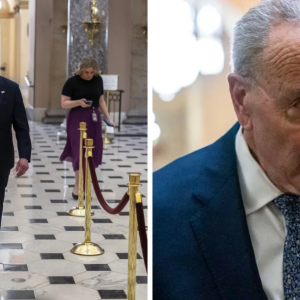President Trump Prepares for New Round of Firings Despite Court Ruling
Amid a turbulent period in American politics, President Donald Trump’s administration is gearing up for another round of firings and budget cuts across federal agencies. This development comes despite a ruling by two federal judges who ordered the reinstatement of thousands of government workers who had been dismissed. The legal ruling, issued just one day before the announcement, has sparked widespread debate and raised concerns over the future of federal employment and government efficiency.

The Trump administration’s ongoing efforts to reduce the size and cost of the federal government have met with both legal and political challenges over the years. The recent court ruling, which favored federal workers who were laid off, has added another layer of complexity to an already contentious issue. The decision requires the government to rehire thousands of workers who were terminated under previous cost-cutting measures. However, despite the ruling, the White House appears determined to proceed with its plans for further personnel reductions and budget cuts, arguing that they are essential for streamlining operations and enhancing efficiency within the federal workforce.
The move to implement another round of layoffs comes at a time when the Trump administration has faced criticism for its management of the federal workforce. The legal challenges to the firings, along with the court ruling, have highlighted the tensions between the government’s desire to cut costs and the legal protections afforded to federal workers. Many of the employees affected by these actions argue that the firings were unjust and violated their rights as federal employees. They point to the loss of job security and the impact on morale within federal agencies as significant concerns that need to be addressed.
However, the Trump administration maintains that its efforts to reduce the size of the federal workforce are part of a larger strategy to make government operations more efficient. The White House claims that by trimming bureaucratic inefficiencies, it can better serve the American people while reducing government spending. Supporters of the cuts argue that the size of the federal workforce has grown too large over the years, and that the proposed layoffs will help to eliminate waste and create a more streamlined and effective government.
Despite these claims, critics of the administration’s approach argue that the firings could have serious consequences for the operation of essential government services. Many fear that the layoffs could lead to understaffed agencies, delays in services, and a decline in the quality of government programs. With so many federal agencies already facing staffing shortages, the additional job cuts could further exacerbate these problems. Additionally, the loss of experienced workers could lead to a loss of institutional knowledge, which may hinder the ability of government agencies to function effectively.
The federal government plays a crucial role in providing services to the American public, and the impact of widespread layoffs could be felt in many areas. From healthcare to education, from national defense to environmental protection, the reduction of federal employees could disrupt vital programs that millions of Americans rely on every day. Furthermore, the Trump administration’s focus on reducing government spending may come at the expense of these essential services, raising questions about the long-term consequences of such cuts.
Another concern surrounding the firings is the impact on federal employees themselves. For many workers, their job with the federal government represents not just a steady income but also an important sense of security and purpose. The potential loss of this security has led to widespread anxiety among federal employees, particularly those who have worked for the government for many years. Many fear that they will be left without jobs, and those who are reinstated after the court ruling may face a difficult and uncertain future.
The legal battle over the firings is far from over, and the Trump administration’s plans for further cuts could face additional challenges in the courts. The federal judiciary has shown a willingness to intervene when it believes that government actions violate the rights of workers. The ongoing legal disputes will likely add to the complexity of the situation, as the government seeks to balance its goals of reducing costs with its obligations to protect the rights of its employees.
Moreover, the public debate surrounding these layoffs has highlighted deeper divisions within the country over the role of government in society. While some Americans support the Trump administration’s efforts to cut government spending and reduce the size of the federal workforce, others believe that such actions undermine the effectiveness of government and the services it provides. This debate is likely to continue as the administration presses forward with its plans for further reductions, regardless of the legal challenges it faces.
The Trump administration’s decision to proceed with the layoffs and budget cuts, despite the court ruling, reflects its broader approach to governance. The administration has long argued that reducing the size of the federal government is essential for improving efficiency and reducing taxpayer burden. However, this philosophy has come under intense scrutiny as the consequences of these cuts become more apparent. Whether these efforts will ultimately lead to a more effective government or undermine public trust in government institutions remains to be seen.
As the situation unfolds, the future of federal employment in the United States hangs in the balance. The Trump administration’s actions are likely to continue to shape the political landscape, and the outcome of the ongoing legal battles could have significant implications for the relationship between the federal government and its workers. While the White House remains committed to its cost-cutting agenda, the courts and public opinion may ultimately play a decisive role in determining the fate of these controversial policies.
In conclusion, the Trump administration’s efforts to carry out a new round of firings and budget cuts come at a time of legal and political turbulence. Despite the court ruling that reinstated thousands of workers, the White House is determined to move forward with its plans. The situation has sparked significant debate over the future of federal employment, government efficiency, and the impact on vital services. As the legal battles continue, it remains to be seen what the ultimate consequences of these decisions will be for both the federal workforce and the American public.


